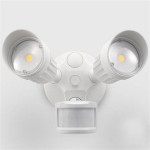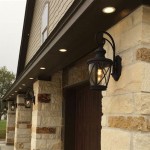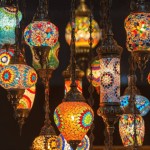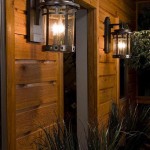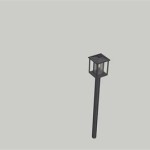Types of Polycarbonate Outdoor Lighting Materials Chart
Outdoor lighting plays a crucial role in enhancing the aesthetics, safety, and security of residential and commercial spaces. Selecting the appropriate materials for outdoor lighting fixtures is paramount to ensure durability, weather resistance, and optimal performance. Polycarbonate, a thermoplastic polymer known for its exceptional impact resistance and optical clarity, is a popular choice for various outdoor lighting applications. This article explores the diverse types of polycarbonate materials used in outdoor lighting, presenting a comprehensive overview useful in making informed decisions based on specific requirements and environmental conditions.
Understanding Polycarbonate Properties for Outdoor Lighting
Polycarbonate offers a unique combination of properties that make it suitable for outdoor lighting applications. Its high impact strength prevents damage from accidental impacts, vandalism, or extreme weather events like hailstorms. Polycarbonate also boasts excellent transparency, allowing for efficient light transmission and minimal distortion. Furthermore, it is lightweight compared to glass or metal, simplifying installation and reducing structural support necessities. Polycarbonate's inherent UV resistance protects against yellowing and degradation caused by prolonged exposure to sunlight, ensuring that the lighting fixture maintains its aesthetic appeal and structural integrity over time. Finally, polycarbonate can be easily molded into complex shapes and designs, providing designers with greater freedom to create visually appealing and functional lighting fixtures.
However, it's crucial to understand that not all polycarbonates are created equal. Different grades and formulations are available, each tailored to specific applications and performance requirements. Factors such as UV stabilization, flame retardancy, and optical properties can vary depending on the specific polycarbonate blend. Therefore, selecting the appropriate type of polycarbonate is essential to ensure the longevity and optimal performance of outdoor lighting fixtures.
Types of Polycarbonate Resins Used in Outdoor Lighting
Several types of polycarbonate resins are commonly employed in outdoor lighting applications, each possessing distinct characteristics that make them suitable for specific purposes. These include general-purpose polycarbonate, UV-stabilized polycarbonate, flame-retardant polycarbonate, and light-diffusing polycarbonate.
General-Purpose Polycarbonate: This type of polycarbonate is the most basic and widely available. It offers good impact resistance and clarity but lacks inherent UV protection. As a result, general-purpose polycarbonate is typically used in applications where direct sunlight exposure is minimal or where a UV protective coating is applied. It is often found in indoor lighting fixtures or in protected outdoor lighting applications like covered porch lights.
UV-Stabilized Polycarbonate: This variant incorporates UV absorbers into the polycarbonate resin, effectively blocking harmful ultraviolet radiation. This prevents yellowing, hazing, and degradation of the material over time, making it ideal for outdoor lighting fixtures exposed to direct sunlight. UV-stabilized polycarbonate is commonly used in streetlights, parking lot lights, and landscape lighting where long-term durability and aesthetic appeal are paramount. The level of UV stabilization can vary depending on the specific formulation, so it's essential to choose a grade that meets the specific UV exposure requirements of the application.
Flame-Retardant Polycarbonate: This type of polycarbonate is formulated with flame-retardant additives to improve its resistance to ignition and flame propagation. It is particularly important in outdoor lighting applications where fire safety is a concern, such as commercial buildings or public spaces. Flame-retardant polycarbonate meets specific fire safety standards and regulations, providing an extra layer of protection and minimizing the risk of fire hazards. It's important to note that the addition of flame retardants may slightly affect the material's optical properties and impact resistance.
Light-Diffusing Polycarbonate: This grade of polycarbonate contains additives that scatter light, creating a more uniform and diffused illumination. This is beneficial in applications where glare reduction and even light distribution are desired, such as pathway lighting or area lighting. Light-diffusing polycarbonate helps to eliminate harsh shadows and hotspots, creating a more comfortable and visually appealing lighting effect. The level of light diffusion can be adjusted by varying the concentration and type of diffusing additives.
Factors Influencing Polycarbonate Selection for Outdoor Lighting
Selecting the most suitable polycarbonate type for an outdoor lighting application requires careful consideration of several factors. These factors include environmental conditions, application requirements, regulatory compliance, and cost considerations.
Environmental Conditions: The prevailing environmental conditions at the installation site significantly influence the type of polycarbonate to choose. For example, in areas with high UV radiation, UV-stabilized polycarbonate is essential to prevent degradation. In coastal areas with high salt spray, a polycarbonate grade with excellent chemical resistance is required. Extreme temperature fluctuations can also affect the performance of polycarbonate, so it's essential to select a material with a wide operating temperature range. Understanding the specific environmental challenges is crucial for ensuring the long-term reliability of the lighting fixture.
Application Requirements: The specific requirements of the lighting application also play a vital role in polycarbonate selection. For high-traffic areas where vandalism is a concern, high-impact-resistant polycarbonate is necessary. If the lighting fixture is located near flammable materials, flame-retardant polycarbonate is recommended. Light distribution requirements will dictate whether a clear or light-diffusing polycarbonate is appropriate. The lamp type used in the fixture (e.g., LED, halogen) can also influence the choice of polycarbonate, as some materials may be better suited for certain light sources.
Regulatory Compliance: Compliance with relevant safety standards and regulations is paramount when selecting polycarbonate for outdoor lighting. These standards may include fire safety regulations, electrical safety requirements, and environmental regulations. Ensuring that the selected polycarbonate meets all applicable requirements is crucial for avoiding legal issues and ensuring the safety of the public. Local building codes may also specify certain requirements for outdoor lighting materials, so it's essential to consult with local authorities to ensure compliance.
Cost Considerations: While durability and performance are important, cost is also a factor to consider. Different types of polycarbonate vary in price, with UV-stabilized and flame-retardant grades typically being more expensive than general-purpose grades. It's essential to strike a balance between performance requirements and budget constraints when making a selection. Consider the long-term cost of ownership, including maintenance and replacement costs, when evaluating different polycarbonate options. Sometimes, investing in a higher-quality polycarbonate initially can result in lower overall costs over the lifespan of the lighting fixture.
In addition to these primary considerations, factors such as color requirements, surface finish, and availability of specific polycarbonate grades may also influence the selection process. Consulting with a knowledgeable materials supplier or lighting engineer can help navigate the complexities of polycarbonate selection and ensure that the chosen material meets all the necessary requirements.
Proper installation and maintenance are also crucial for maximizing the lifespan of polycarbonate outdoor lighting fixtures. Follow the manufacturer's instructions for installation to avoid damaging the material. Regularly clean the polycarbonate surfaces with a mild soap and water solution to remove dirt and debris. Avoid using harsh chemicals or abrasive cleaners, as these can damage the polycarbonate. Inspect the fixtures periodically for signs of damage or degradation, and replace any damaged components promptly.
By carefully considering the various types of polycarbonate available and the factors that influence their selection, it is possible to choose the optimal material for any outdoor lighting application. This ensures long-lasting performance, enhanced safety, and a visually appealing lighting solution.

China Custom Light Transmission Polycarbonate Sheet S Manufacturers Factory Direct Whole Unique

Laserlite Multiwall Installation Guide With Tips Polycarbonate Roofing

Polycarbonate Thickness Chart Selection And Installation Guide

Polycarbonate Thickness Chart Selection And Installation Guide

Light Diffusing Plastics S For Lighting Curbell

Polycarbonate Roofing Sheets The Perfect Combination Of Coverings And Natural Light Palram Industries Ltd

Tap Plastics Polycarbonate Uv Protected Sheets Cut To Size Solar Gray

Polycarbonate Plastic View Strength Impact Resistance Curbell Plastics

Outdoor Light Installation Cost To Install Landscape Lighting Fixr Com

Suntuf Corrugated Polycarbonate Panels Diy Outdoor Roof
Related Posts
